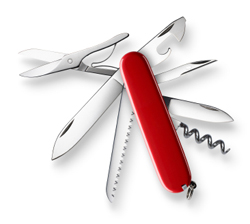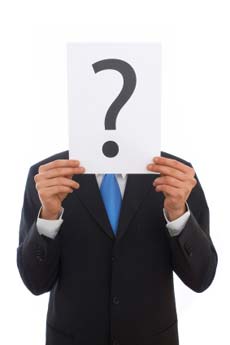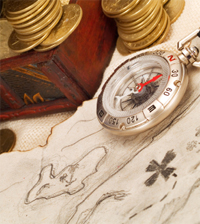Trade Show Design Trends: Multi-Purpose Custom Design
Most companies end up purchasing several kinds of displays to work for different types of events.  For small, local shows they have tabletop and standing displays, table covers in various sizes, and portable trade show stands. For larger spaces, they have modular displays. And for their “big show” they have a custom exhibit.
For small, local shows they have tabletop and standing displays, table covers in various sizes, and portable trade show stands. For larger spaces, they have modular displays. And for their “big show” they have a custom exhibit.
Now, some companies are asking a lot more from their trade show design firm. They want to invest in trade show exhibits that can be used for many types of events, will hold up to a lot of uses but still look new, and that can be easily updated for new shows. They are commissioning Multi-Purpose Custom Exhibits.
These companies are investing in large custom exhibits that are composed of components that can be used in smaller booths. In some cases, it is as simple as cleverly designing a large backwall so that a 10-foot section can be used in a small booth. In others, an elaborate custom space with stages, interactive displays, meeting area and merchandise fixtures is created for a large island booth at a major trade show. After the show, many of the components can be reconfigured to use for smaller exhibits.
Multi-Purpose Custom Design has financial benefits
The main motivation for moving to Multi-Purpose Custom Design is financial. Sometimes the initial custom display is a bit more expensive but most companies experience savings in the first year.
Brand consistency across all shows
Because all of the components for trade show displays are done at the same time, it is easier to maintain brand integrity. There is consistency in graphics, colors, copy positioning, and product displays.
How to start work on a Multi-Purpose Custom Design
Put together a list of all the shows on your Trade Show schedule along with planned booth sizes. Make sure to gather any special exhibit requirements. Determine how long the exhibit will be used. Is it for a year, or for longer? Define your marketing goals and how the exhibit will be tied into your company’s overarching brand campaign. Then select a custom design firm that understands how to create Multi-Purpose Custom Exhibits.
Yes, it takes a bit more planning in the beginning but the benefits are worth the effort.
Staff Your Trade Show Exhibit to Win!
 Anyone who has attended a trade show can tell you that the best booth, in the best location, with the best promotion, may not get the sale if you do not put together the right team to represent your company.
Anyone who has attended a trade show can tell you that the best booth, in the best location, with the best promotion, may not get the sale if you do not put together the right team to represent your company.
Overall, you are looking for people who are fun to be with and who can help bring your booth to life. Here is a checklist of critical factors to consider when selecting your team.
- Make sure you have the right number of people to staff the booth. It depends on the type of show, your business sector and the type of promotional campaign you plan. A good rule of thumb is one person for every 50 square feet of booth space, including break coverage.
- Make sure that the people staffing your booth have an appearance that is consistent with your brand and trade show campaign.
- Look for people who are naturally friendly and outgoing, and who smile. You want people who are eager to meet attendees.
- Select people who are good listeners and who know how to ask open-ended questions that encourage prospects to talk about their needs.
- Choose team members who know your business sector or who can be quickly trained to knowledgeably answer questions. It is best to select people who know your product, your company and its capabilities, and who know the competition.
- Think about attire and set a dress code. Don’t leave this critical element to chance. Make sure your entire team is willing to follow the dress code.
Once you have selected your team, make sure they have the tools they need and are properly trained to represent your company, qualify leads and secure sales.
Tips for Selecting the Right Trade Shows
Making the decision to exhibit at a trade show is a significant commitment—in both time and expense—for any size company. Trade shows can deliver significant bottom-line benefits by generating valuable sales leads, increasing company awareness, launching new products or services, building brand recognition, finding new channel members and gaining media attention. In order to successfully achieve any of these, however, you must first select the right trade show for your company.
 If you are the person tasked with this selection process, the burden is on you to make an informed decision, selecting shows that will deliver the right target audience for your marketing message. Here are a few questions to ask when evaluating your trade show options:
If you are the person tasked with this selection process, the burden is on you to make an informed decision, selecting shows that will deliver the right target audience for your marketing message. Here are a few questions to ask when evaluating your trade show options:
What are my goals? You first must determine your objectives for the show so you can choose the show that will give your company the best return on investment (ROI) in terms of your goals. If your goal is on-site sales, picking a show where there are dozens of competitors selling similar products will be a bust and a colossal waste of money.
Who will be there? Your first step will be to quantify the total number of relevant prospects, buyers, and influences who will be interested in your company’s products or services. Obtain an Exhibitor’s Registration Kit and look at the attendee profile of previous shows, including job title, industry representation, type of business, and geographical distribution.
Does size really matter? Bigger isn’t really necessarily better. Really. The size of the show should match your goals sales leads, units sold, etc.). If you’re a smaller company, it might be difficult to stand out at big trade shows, whereas at a smaller one you might be more noticeable. Smaller ones, however, won’t generate the same high number of leads as larger shows so you’ll have to weigh the pros and cons of both and how they relate to your overall objectives.
Will your competitors be there? Though you might not like competing for the same mindshare, the proximity of competitors in one place can be a boon for your business. Find out in advance which of your competitors are going to be there. This actually can help you formulate a winning strategy and effective marketing message specific to that show. What new products are you introducing? And, how and why are they better than your competitor’s?
Is it the right choice? Though you’ll never know for sure in advance whether a trade show is going to deliver a return on your investment, there are some ways to hedge your bets. Ask yourself whether this show is well aligned with the core competencies of your business or just one facet of its offerings? Is the right audience going to participate? Can my company stand out and be unique on the show floor?
What about media coverage? Ask for last year’s press list. Do any of these publications reach your target customers? Do you have a compelling story to tell them? If so, this show might be a good fit.
Make your Trade Show Exhibit a PR Showcase
Every trade show is a public relations opportunity.
Your Trade Show Exhibit plan should be designed to target your target customer markets and the event, but here are a few tips that will help you make a PR impact.
Determine your PR objective
 The best PR efforts have a singular, focused objective. Are you trying to increase awareness of your company’s products, services and/or brand? Are you trying to reach new prospects? Do you want to expand your distribution channels and recruit new distributors or dealers? Are you most interested in maintaining a presence and enhancing your company’s visibility?
The best PR efforts have a singular, focused objective. Are you trying to increase awareness of your company’s products, services and/or brand? Are you trying to reach new prospects? Do you want to expand your distribution channels and recruit new distributors or dealers? Are you most interested in maintaining a presence and enhancing your company’s visibility?
What is your news?
If you want press, you need to create a story, you need to have a news hook. Are you introducing a new product or service? Has your company achieved a new milestone?
If you do not have news, looks for ways to create news value. For example, did your company recently complete a new research study about the industry or your products, and can you release some of this information for the first time at the trade show? Can you provide insight into current industry trends?
Build media interest before the show
Look at past events and see how much press coverage exhibitors received. Generally, national and international industry trade shows and conferences get the most coverage. Before the show, contact trade and local reporters who are likely to cover the event. Also, connect with any media representatives who are pre-registered for the show. Your overall goal is to secure media interest in your company, and if possible, schedule interviews during the show.
Work with the event organizers
Most trade show organizers engage in media promotion throughout the year. They are often the best source of information about who will be covering the show.
Put together a press kit
At least a month before the show, put together a press kit. Include information about your company, products and services, performance reports, past articles, key executive bios, and other material that will help reporters feature your company and your products. Include one press contact in your press kit.
Arrange to have your press kit in the media room or delivered to reporters. And, always have a few extra copies in your trade show booth.
Issue a press release from the show.
Make your news the focus of the press release and include a senior executive as the contact from your company.
A carefully planned tradeshow PR strategy can help you attract positive press coverage at your next trade show. It can also make your trade show exhibit investment more productive.
Trade Show Strategy: Plan it Like an Expedition
I like to think about a trade show like an expedition. I’m headed off to some exotic land in search of treasure. I will be deep in the jungle, cut off from civilization for days. It will be hard to get supplies. I know that my team should expect no outside help. The fate of the entire expedition rests in the hands of the people I choose to man the booth, careful planning and how well equipped we are to meet the expected – and unforeseen – challenges.

The treasure is, of course, new customers and sales. And getting those new customers requires an action plan.
Plan your targets in advance
About 75% of show attendees plan booth visits and meetings before the show starts. Review the attendee list in advance of the show. ID your targets. Start to invite people to visit your booth a few weeks before the show. Personal phone calls are most effective and harder to ignore than e-mails and mailings. Think about pre-show communications that will create anticipation of your booth – it can feature a special promotion or some buzz about a new product release.
Make sure you and your team are outfitted for this adventure
Select clothes that look professional or that support the theme of your booth, but also make sure that everyone will look great all day. Plan on it being either too hot or too cold – attire with a jacket that can be removed is a great choice. And wear comfortable shoes. (One of the biggest mistakes I ever made was wearing beautiful, brand new shoes that were not a great fit to a trade show.) It is almost impossible to really smile if you have been standing for 6 hours and your feet hurt.
Have enough staff or find a partner
Ideally, you will have enough staff in your booth to meet with prospects and give your team breaks. If you have limited staff or have only one person at the booth for a show, find another larger company to partner with. It is best to do this before you select your booth location so that you can be located next to each other or share a larger space.
Pick the right team
Who you pick for this “expedition” is essential to making it successful. Fill your team with high-energy people who have an upbeat attitude. And make sure that everyone who is representing your company has deep product knowledge.
Plan your sales material carefully
People who attend a show are bombarded with information and the best way to be remembered is from your sales literature. Make sure it is easy to carry and packed with valuable information – your goal is to make sure people take your material back to their office. If you have a really valuable prospect, make sure to get their contact information and send material to them after the show.
Carefully select your bait
Over 90% of exhibitors bring a premium or free sample to give away at a trade show because offering an attractive free gift is great way to attract people to your booth. You will be the best choices and can usually save money if you plan this in advance.
What do you do before a show to make it more successful?
Archives
- July 2021
- June 2021
- May 2021
- April 2021
- October 2018
- September 2018
- August 2018
- July 2018
- June 2018
- May 2018
- April 2018
- March 2018
- February 2018
- January 2018
- December 2017
- November 2017
- October 2017
- September 2017
- August 2017
- July 2017
- June 2017
- May 2017
- April 2017
- March 2017
- February 2017
- January 2017
- December 2016
- November 2016
- October 2016
- September 2016
- August 2016
- July 2016
- June 2016
- May 2016
- April 2016
- March 2016
